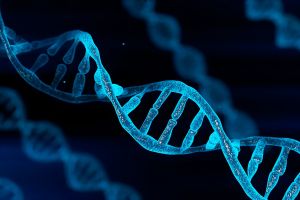10 May 2023
Blog post
After the vote was over, after the count was done….
Journalistically, of course, it’s enticing. But as a description of what happens when using the mitochondrial transfer technique it’s not only misleading, but also distracting because it focuses attention on the wrong issue. Ethically speaking what’s more significant is not the contribution of the third “parent”, but the passage of the consequent genetic changes to future generations.
When asked to chair the Council’s working party on mitochondrial transfer, I envisaged the subsequent media and public discussion of the technique as possibly constituting a helpful dry run for the much wider debate that will have to precede any proposed changes to inherited nuclear DNA. Whatever we may think of such a development, we can be certain that someone, somewhere will sooner or later request the right to apply the technique to humans. And given recent advances in the field of gene editing, the urge to perform this full blown version of germ line gene therapy is quite likely to manifest itself sooner rather than later.
The debate prompted by our 2012 report did not entirely play out as I had hoped. The dominance of the three parent obsession all but choked off discussion of the moral significance of introducing inherited changes. The hope that this might help prepare us for a subsequent and vastly more contentious debate on the ethics of changing nuclear DNA began to fade. But there again I suppose that was partly of our own doing. For obvious reasons our report went to considerable lengths to emphasise the clear distinction between nuclear gene changes and mitochondrial transfer.
The public discussion preceding this week’s Parliamentary debate also featured the three parent issue - but seemed to leave more room for reflecting on the significance of inherited change. So in this respect it was more complete. Which was encouraging.
Less encouraging - returning now just to mitochondrial transfer - were sudden outbreaks of last minute nervousness, not least among some clergymen who sidestepped their evident moral qualms by a comforting insistence that for safety reasons this was not the right time to be permitting the human use of the technique. It was as if the ethical dilemmas had only just occurred to them, and had never been chewed over.
As senior academics from Doug Turnbull to Lisa Jardine pointed out, if a decade plus of laboratory research, animal experimentation and intense ethical scrutiny, together with the oversight of a demonstrably effective regulatory authority didn’t make this the right time to give the go ahead to mitochondrial transfer, what did? As someone once said, if not now, when?
So, what did we learn from the events of the past week that might prepare us for future debates. Not much more, I fear, than we already knew. But the lessons are clear, and well worth reiterating. To avoid being lead carelessly or unwisely into the blind acceptance of any new technology we must continue to play close attention to what the scientists are doing. The ethical scrutiny of mitochondrial transfer started well before the technique was ready for use - and by the time the researchers sought permission to apply it, much of the ethical spade work was already complete.
The time to start thinking about the consequences of intervening in heritable nuclear genomes is not when a laboratory located beyond the control of any responsible regulatory authority starts to tweet, blog or otherwise boast of what it has already achieved. The time is sooner than that. Much sooner. Perhaps it’s now.
Author: Dr Geoffrey Watts, Council member

Comments (0)
Join the conversation